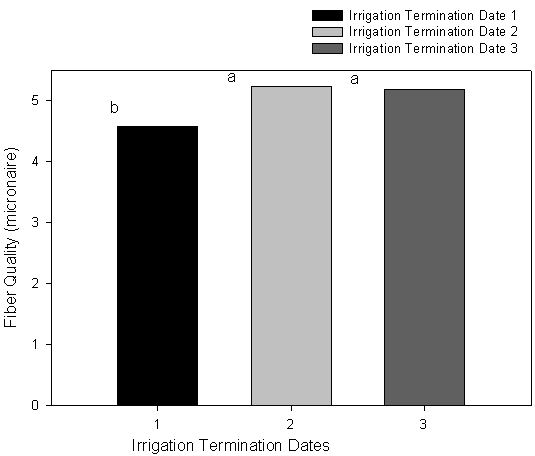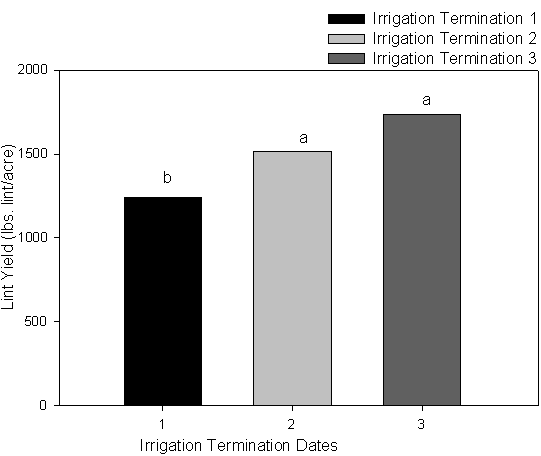The following three basic components are usually recognized as being important in determining fiber micronaire: 1) genetics, 2) environment, and 3) management. In previous articles I have outlined some of the patterns associated with micronaire in Arizona and how these trends might relate to the three basic components mentioned previously. In an effort to address this complex issue and try to identify some of the management factors that can be important in determining fiber micronaire, a research project was initiated in Arizona during the 2000 cotton season.
Approximately 250 cases (fields) were identified with grower-cooperators throughout central and western Arizona with Upland cotton. Routine plant measurements for each site were carried out on a regular basis at approximately 14 day intervals throughout the season. Field records were developed for each field by use of the University of Arizona Cotton Monitoring System (UA-CMS) for points such as variety, planting date, fertility management, irrigation schedules, irrigation termination, defoliation, and all plant measurement data.
In review of the information from across the state in 1999, there appeared to be a relationship between irrigation termination/late season management, and micronaire. Therefore, one experimental location at the University of Arizona Maricopa Agricultural Center (MAC) was established (planted and watered-up on 6 April 2000) for the purpose of comparing irrigation termination (IT) treatments (dates) in relation to lint yield and micronaire. In this experiment, IT treatments (3) served as main plots (12, 40 inch rows wide and 650 ft. long) with varieties (13) as subplots. Basic plant measurements and management information were collected for this project similar to the other sites previously described. Lint yields and quality were measured and compared among all IT X variety combinations. Irrigation termination treatments were imposed in relation to the crop fruiting cycle. The first IT treatment (IT1) was made on 25 July with the intention of terminating irrigations somewhat prematurely. Based upon current UA recommendations for IT to complete a single cycle fruit set, the more optimal date of IT would have been 5 August. In this experiment, IT2 was structured to provide one additional irrigation past the more optimal date and IT2 was made on 17 August. For the IT3 plots the intention was to attempt a second cycle fruit set and irrigations were continued until 15 September. The IT2 treatment received two additional irrigations over IT1 and IT3 received four additional irrigations over IT1 (approximately two acre-feet of additional irrigation water).
There were significant effects due to IT and variety. Average mic values were lowest for IT1 and generally increased with later IT dates (Figure 1). Lint yield patterns were very similar to mic as a function of IT (Figure 2). Lint yields increased with later IT. The IT1 lint yield means were significantly lower than yields for IT2 and 3. For example, mean lint yields among all varieties was ~ 1300 lbs. lint/acre for IT1 and nearly 1800 lbs. lint/acre for IT3.
The body of data from the 250 cases that were sampled during the 2000 season is still being analyzed. From the preliminary analyses that have been conducted (basic correlation analysis, principle component analysis, a series of multiple regression models, and some CART analyses), a few parameters have shown some significance on a consistent basis. These parameters include:
- Heat units accumulated after planting (HUAP) to irrigation termination.
- In general, as HUAP increased, micronaire increased also.
- The number of green bolls on the plant as the crop approached cut-out.
- As the number of green bolls increased, the micronaire tended to be lower
- The position of the first fruiting branch.
- With lower first fruiting branch, micronaire tended to be lower.
- Variety
General recommendations that could be offered for growers to consider at this time include:
- Consider variety selection carefully
- Manage for early fruiting
- Monitor early fruiting
- Watch for and identify any terminal damage (can delay fruiting)
- Manage for a uniform fruiting pattern (avoid fruiting gaps)
- Water management
- Fertility management
- Pest control
- Monitor fruit set (retention) as crop approaches cut-out
- Evaluate crop condition at cut-out when considering a top-crop
One very good source of information to assess the genetic or varietal influence on cotton micronaire is the data generated by the statewide variety testing program conducted by the University of Arizona (UA). This program is directed by Dr. Hal Moser (UA) in cooperation with county agents, seed company representatives, and farmer-cooperators in many locations across the state. Another good source of information of this type includes the data provided by commercial seed companies from their variety testing programs in Arizona. It is important to identify varieties that may have a tendency to produce higher micronaire across locations in a consistent pattern. Micronaire potential of course is only one factor to consider in selecting a variety.

Fig 1. Mean micronaire values as affected by irrigation termination dates
for all varieties, Maricopa, 2000.

Fig. 2. Mean lint yield as affected by irrigation termination dates for
all varieties, Maricopa, 2000.
Issued in furtherance of Cooperative Extension work, acts of May 8 and June 30, 1914, in cooperation with the U.S. Department of Agriculture, James A. Christenson, Director Cooperative Extension, College of Agriculture and Life Sciences, The University of Arizona.
The University of Arizona is an equal opportunity, affirmative action institution. The University does not discriminate on the basis of race, color, religion, sex, national origin, age, disability, veteran status, or sexual orientation in its programs and activities.
Any products, services, or organizations that are
mentioned, shown, or indirectly implied in this web document do not imply
endorsement by The University of Arizona.
Information provided by Jeffrey C. Silvertooth, silver@ag.arizona.edu
Extension Agronomist - Cotton, College of Agriculture and Life Sciences, The University of Arizona.
Material written 5 March 2001.
Crop Mgmt | Soil Mgmt | Irrigation | Varieties | Cotton Comments
Home | Cotton | Advisories
document located at: http://cals.arizona.edu/crops/cotton/comments/mar2001cc.html
Copyright © 2001 University of Arizona,
College of Agriculture and Life Sciences
Webmaster: Al Fournier (acis@ag.arizona.edu)